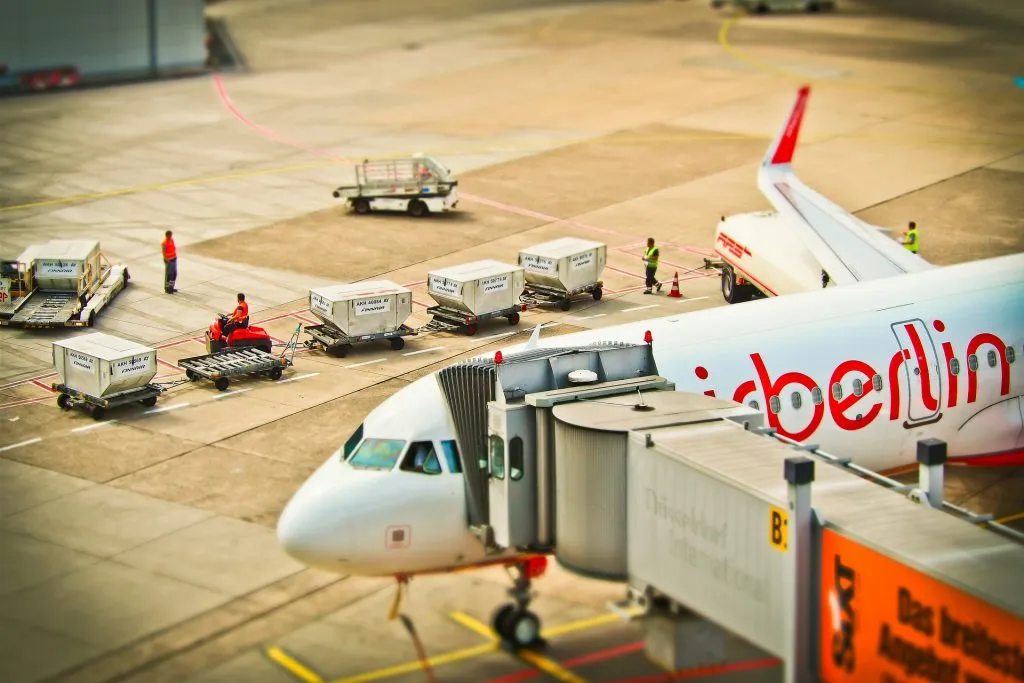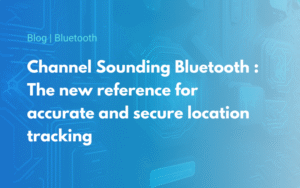
By offering exceptional connectivity and data collection, many sectors have been revolutionized by the development of connected sensors and, more broadly, by the “Internet of Things” (IoT).
However, the reliability and resilience of these sensors in diverse and demanding environments remain major challenges. The aerospace industry is one of the most demanding and standardized, especially when it comes to electronic devices on board aircraft. In this article, we invite you to learn more about DO-160 certification and its impact on IoT sensors.
All you need to know about DO-160 certification
The world of aviation relies on strict standards to ensure the safety and performance of equipment on board aircraft. At the heart of these standards and certifications is DO-160, known in full as “Environmental Conditions and Test Procedures for Airborne Equipment“. Published by RTCA, Inc., this certification is widely recognized in the aviation industry.
This certification, which defines the environmental conditions and test procedures for airborne equipment, plays a key role in ensuring the quality of IoT (Internet of Things) sensors used in this field.
Before we explore the impact of DO-160 certification on IoT sensors, let’s start by defining it and examining its scope
What is DO-160 certification?
DO-160 is a recognized certification for aeronautical equipment. It covers a wide range of tests designed to assess product performance under the specific environmental and electromagnetic conditions encountered on board aircraft, and more generally in the various climatic, mechanical and atmospheric conditions. These tests include aspects such as temperature and altitude, mechanical vibration and shock, pressure, humidity, thermal shock, watertightness, temperature, electrical shock, electromagnetic compatibility (EMC), static lighting, lightning protection and radio frequency (RF) emissions.
This certification is often required by aviation regulators, aircraft manufacturers and airlines to guarantee the safety and reliability of electronic equipment used on board aircraft.
Who is in charge of implementing DO-160 certification?
Certification of a product’s compliance with the DO-160 standard is generally carried out by independent certification organizations and testing laboratories that specialize in environmental and electromagnetic testing for the aviation industry. These entities are accredited and recognized for their expertise in carrying out tests in compliance with aviation-specific standards and regulations.
Certification organizations and testing laboratories carry out tests in accordance with DO-160 criteria. Once the tests have been completed, they provide a detailed test report which describes the test results and determines whether or not the product has passed the tests in accordance with DO-160.
These must be accredited by recognized bodies, such as ISO (International Organization for Standardization) or other national accreditation bodies, to ensure standards-compliant testing.
What do qualification tests consist of?
DO-160 equipment qualification tests are divided into 26 sections. Of these 26, 23 define the tests to be carried out on products likely to be used in aircraft. Each section has its own requirements, which may vary according to product category and use.
These sections include: temperature and altitude, temperature variations, humidity, shock in normal operation and crash safety, vibration, resistance in explosive atmospheres, sealing, sensitivity to fluids, dust and sand, etc.
These test reports are often used as proof of compliance for aviation regulatory authorities, customers and business partners. If the product meets the test criteria of DO-160, it is considered to have passed the tests and meets the safety and performance requirements for use on board aircraft.
It is important to consider that collaboration between the equipment manufacturer and the customer is key to defining the tests for the various sections and the corresponding category of equipment. A negative result does not automatically mean rejection, as the final decision rests with the customer.
The impact of DO-160 certification on IoT sensors in the aeronautics industry
IoT sensors play an important role in the aviation industry, providing real-time data on various aspects of flight and environmental conditions. Whether monitoring atmospheric pressure at different altitudes, temperature in the baggage compartment or engine vibration, IoT sensors provide essential information for flight safety and performance.
IoT sensors must meet DO-160 certification requirements:
Due to the demanding conditions to which aircraft are subjected, IoT sensors must meet the rigorous standards of DO-160 in order to be considered reliable and usable on board.
- Environmental conditions
IoT sensors must be capable of operating in a wide range of environmental conditions: extreme temperatures, intense vibrations and mechanical shocks. For example, sensors installed in the wings of an aircraft may be subjected to considerable vibration during take-off and landing.
- Electromagnetic compatibility (EMC)
Modern aircraft are packed with electrical and electronic equipment, creating a complex electromagnetic environment. IoT sensors must be designed to resist electromagnetic interference and not cause harmful interference to other onboard systems.
- Compliance testing
In order to be used in aviation, IoT sensors must undergo compliance tests designed to simulate the environmental conditions to which the sensors will be exposed in flight, in accordance with DO-160 specifications.
Use cases for IoT sensors in aeronautics
IoT sensors, which comply with the DO-160 standard, help to improve the overall performance of the aeronautics industry. They can be used in a wide range of applications, including :
Avionics equipment: IoT sensors used in avionics systems, such as navigation, communication, surveillance and flight management systems, must comply with the DO-160 standard, as they provide crucial data for aircraft piloting and navigation.
Environmental Monitoring: IoT sensors used to monitor environmental conditions on board the aircraft, such as pressure, temperature, humidity or vibration, must also comply with DO-160, as these sensors contribute to maintaining a safe and comfortable environment for passengers and crew.
Engine and Systems Management: IoT sensors used to monitor the performance of engines, hydraulic systems, fuel systems and other critical components must meet the requirements of DO-160, as they play an essential role in early problem detection and predictive maintenance.
Passenger Safety and Monitoring: Some IoT sensors are used for passenger safety and monitoring, such as fire detection systems, gas detection sensors and video surveillance systems, as they must also comply with the DO-160 standard to ensure their reliability in an emergency.
Communications and Connectivity: IoT sensors used for on-board communications, such as wireless communication sensors, must meet DO-160 criteria to ensure that they do not interfere with other electronic systems.
Tracking and tracing packages and equipment: Some IoT sensors, such as ELA Innovation’s Bluetooth motion sensors, enable tracking and inventory of equipment and packages transported by air. All IoT sensors intended for aeronautical use, exposed to demanding environmental and electromagnetic conditions, must comply with the DO-160 standard. This ensures reliable, safe and accurate functionality during flights.

Discover our Bluetooth motion sensor
for equipment & inventory tracking
What are the benefits of IoT sensors in the aerospace industry?
The aerospace industry is constantly evolving, and to keep pace with technological advances and changing requirements, IoT sensors present an opportunity to increase efficiency and optimize maintenance-related costs.
Enhanced safety and optimized maintenance
The IoT is an essential asset for improving safety in the aviation industry. By providing real-time data on aircraft maintenance and operational conditions, the IoT enables proactive decisions on repairs and replacements. What’s more, the IoT can generate early warnings of emerging problems, facilitating rapid and appropriate intervention.
Cost optimization
In the aeronautical sector, the IoT opens the way to substantial savings, whether by reducing fuel costs or anticipating malfunctions, thanks to the real-time transmission of data on equipment performance. Sensors can also be used on airport tarmacs to geolocate and inventory NMEs (Non-Motorized Equipment), thus reducing the time between aircraft arrival and departure.
Enhanced customer experience
The IoT contributes greatly to improving the customer experience by providing real-time data on aircraft departure and arrival times. This enhanced transparency means that customers are instantly informed of any changes to their flight schedule.
>> Discover the success story with Air France <<
In conclusion, the DO-160 standard is essential to ensure that equipment on board aircraft meets safety and performance requirements. Any IoT sensor intended for use on board aircraft or in aviation environments where it may be exposed to demanding environmental and electromagnetic conditions must comply with DO-160. This ensures that the sensor will operate reliably, safely and accurately under flight conditions.
Thanks to this standard, modern aviation benefits from high-quality IoT sensors, contributing to flight safety and efficiency.
In the aviation industry, where safety and standards compliance are paramount, it is essential to consider several standards in parallel to ensure equipment reliability. In addition to DO-160, other directives such as MIL STD play key roles.
It should be remembered, however, that there is no compatibility between DO-160 and other types of regulation, such as European regulations (CE marking). For example, the report and results of EMC (Electromagnetic Compatibility) tests obtained under DO160 cannot be used for European certification.


